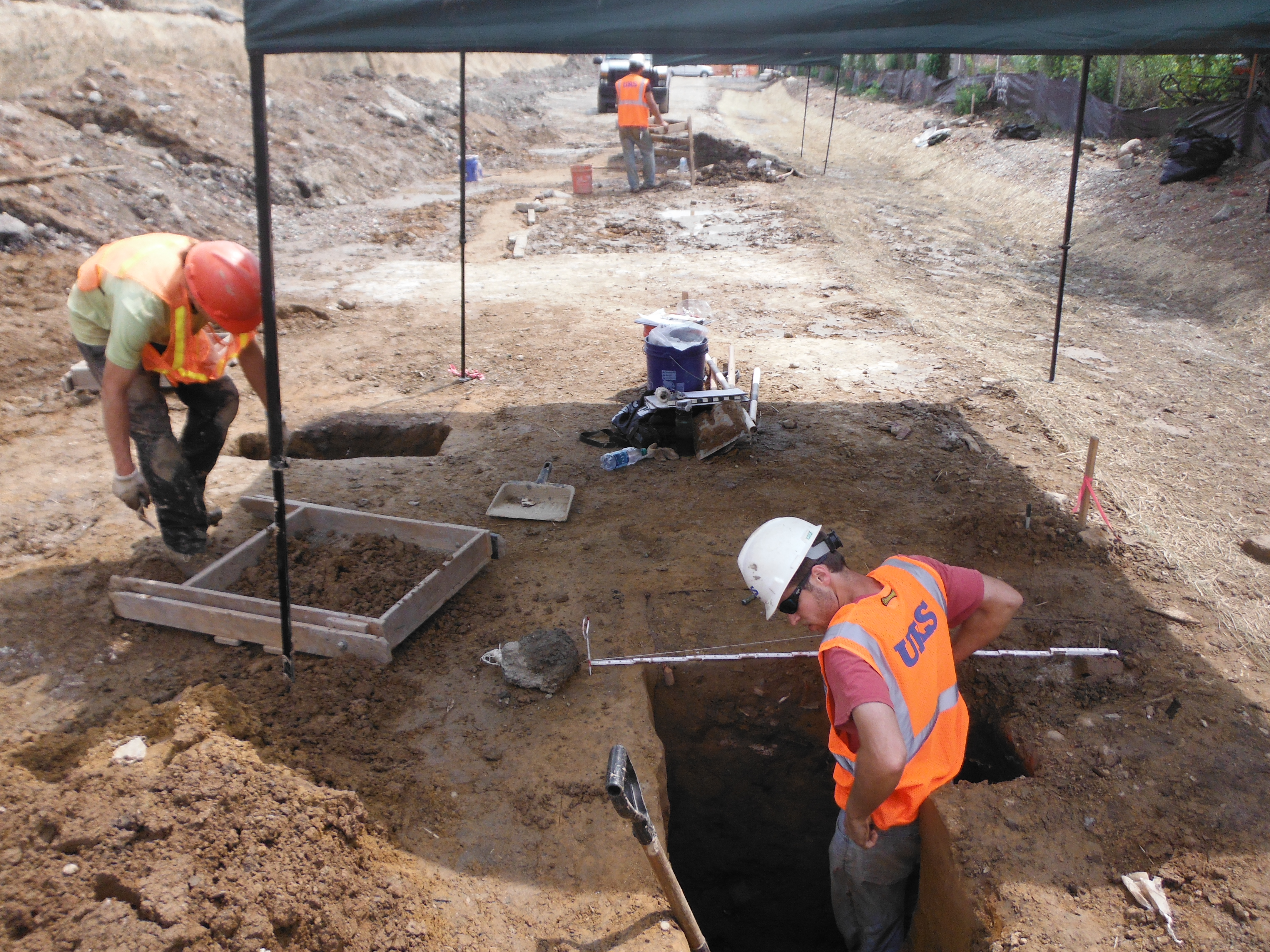The Shackamaxon #1 Site was initially excavated in 2009, with additional testing of peripheral site components completed during construction monitoring in 2014. The site extends on both sides of the I-95 roadway in the Kensington-Fishtown neighborhood, with the densest part identified on the north side of the highway, in what had been the backyard space of the historic property formerly located at 1026 Shackamaxon Street. A lower density artifact scatter was also found in the grassy right of way on the south side of the highway, adjacent to extant house lots that front on Richmond Street.
| Site Name | Shackamaxon #1 |
| PASS# | 36PH0159 |
| Image | 1 image site overview |
| Dates of Excavation | 2009, 2014 |
| Phase of Excavation | Phase I, II and III |
| Number of Test Units | 30 |
| Approximate Number of Features Identified | 0 |
| Associated Periods | Pre-contact; Archaic to Woodland period |
| Site Acreage | Approximately 0.79 acres |
Pre-contact artifacts were initially identified in partially impacted original ground surface (plowzone/Ap-horizon) and undisturbed subsoil (E/B-horizon) layers preserved beneath 1–2 feet of historic fill deposits. Soil analysis indicated that these original soils were part of a coastal plain upland landform that lay between the adjacent Delaware River and Cohocksink Creek drainages. On the north side of I-95, intact original soil deposits had been severely impacted by historic-period disturbances and were documented in a narrow band measuring about 100 feet long by 3–4 feet wide. Basement excavation had removed ground adjacent to Shackamaxon Street in the eighteenth and nineteenth centuries, and approximately 90% of the former backyard space had been disturbed during construction of the adjacent I-95 concrete abutment. The remaining narrow band of backyard soils was further impacted by nearly 70 historic-period features, including large barrel and box privies, pits, postholes, and stone foundations. Here, pre-contact artifacts were retrieved from the small patches of intact soils preserved between and around these features, and from secondary deposits within historic features.
In all, excavation recovered nearly 250 definitive pre-contact artifacts, slightly more than half of which were found in historic feature fill deposits. Of this total, most of the artifacts consist of argillite, chert, jasper, quartz, and quartzite tool-manufacturing debris, along with fire-cracked rock (FCR). The tools found include four simple flake tools, 15 bifaces, and a dozen cobble or groundstone tools (anvil/hammerstones, chopper, netsinkers). Diagnostic projectile points include teardrop, side-notched, stemmed, and triangular “bird point” variants. No pottery or pre-contact features were identified at this site.
While temporally diagnostic points suggest the Shackamaxon #1 Site was likely occupied at multiple times during the Archaic through Woodland culture periods, a handful of other artifacts could also point to the presence of a contact-period component, as well. These other objects include several large fragments of colonoware pottery, a small metal “tinkling cone” (a type of decorative clothing adornment made from rolled metal scraps), and a small number of possible glass trade beads. Objects like these have been found in other contact-period Native American sites in the Delaware Valley and across Pennsylvania; however, they have also been documented at sites that contain significant early African American occupations—like the National Constitution Center Site in Independence Mall—and could be indicative of traditional West African material culture. As such, the presence of a contact-period component at Shackamaxon #1 cannot be established with certainty.
